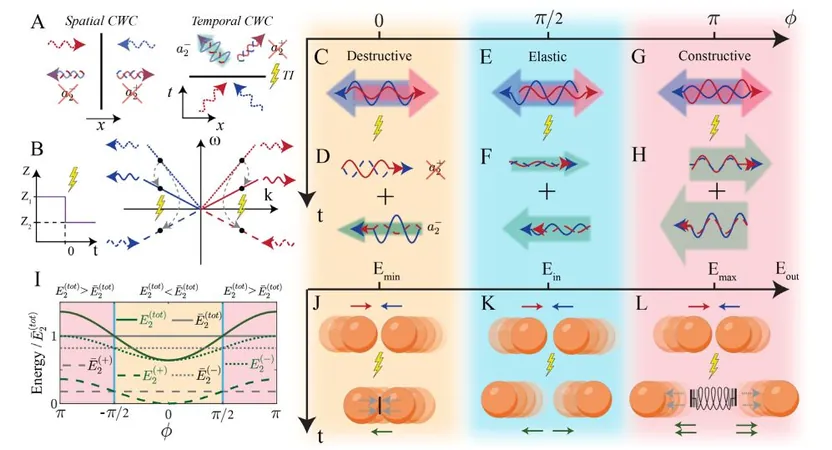
Revolutionary Metamaterials Create Temporal Light Reflections – The Future of Optical Technology!
2025-01-01
Author: Ming
Introduction
In a groundbreaking development that merges physics and materials science, researchers have unveiled an innovative technique for manipulating light using metamaterials. This technique enables the creation of temporal light reflections, a phenomenon that extends the boundaries of how we understand and utilize electromagnetic radiation.
Traditional Understanding of Light
Traditionally, we see light reflecting off surfaces like mirrors, primarily metallic ones, to produce clear images. However, nature itself offers stunning examples of how light can refract and reflect in unique ways, particularly through intricate structures found in butterfly wings and the vibrant colors of human irises. These natural wonders arise not from pigments, but from the ingenious interaction of light with microstructures. Now, scientists are taking inspiration from these phenomena to create new devices that can control light in unprecedented ways.
The Breakthrough Study
A recent study published in *Nature Physics* by Emanuele Galiffi and colleagues presents an exciting innovation: a metamaterial that enables temporal coherent wave control (CWC). This specialized material allows multiple microwave radiation beams to interact in such a way that they create a unique type of light behavior—temporal reflections. Unlike traditional spatial CWC, where waves create major constructive or destructive interferences, these waves reflect off one another at a "time interface," leading to fascinating results that deviate from our conventional understanding of optics.
Implications of the Research
While sensational headlines may suggest that this research allows for "turning back time" or "seeing the back of your own head," the reality is that the implications are more scientifically profound than dramatic. The researchers emphasize that this technique opens doors to discovering new light-matter interactions, especially within the microwave spectrum and potentially impacting other areas as well.
Future Applications
The potential applications are vast and could revolutionize technology in telecommunications, sensing, and imaging. As we continue to explore the interactions between light and metamaterials, who knows what future wonders lie ahead? This study not only enriches our understanding of fundamental physics but may also lead us toward advanced optical devices that could reshape industries.
Conclusion
Stay tuned for more developments in the exciting world of metamaterials and light manipulation!



 Brasil (PT)
Brasil (PT)
 Canada (EN)
Canada (EN)
 Chile (ES)
Chile (ES)
 Česko (CS)
Česko (CS)
 대한민국 (KO)
대한민국 (KO)
 España (ES)
España (ES)
 France (FR)
France (FR)
 Hong Kong (EN)
Hong Kong (EN)
 Italia (IT)
Italia (IT)
 日本 (JA)
日本 (JA)
 Magyarország (HU)
Magyarország (HU)
 Norge (NO)
Norge (NO)
 Polska (PL)
Polska (PL)
 Schweiz (DE)
Schweiz (DE)
 Singapore (EN)
Singapore (EN)
 Sverige (SV)
Sverige (SV)
 Suomi (FI)
Suomi (FI)
 Türkiye (TR)
Türkiye (TR)
 الإمارات العربية المتحدة (AR)
الإمارات العربية المتحدة (AR)